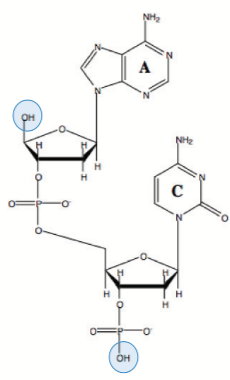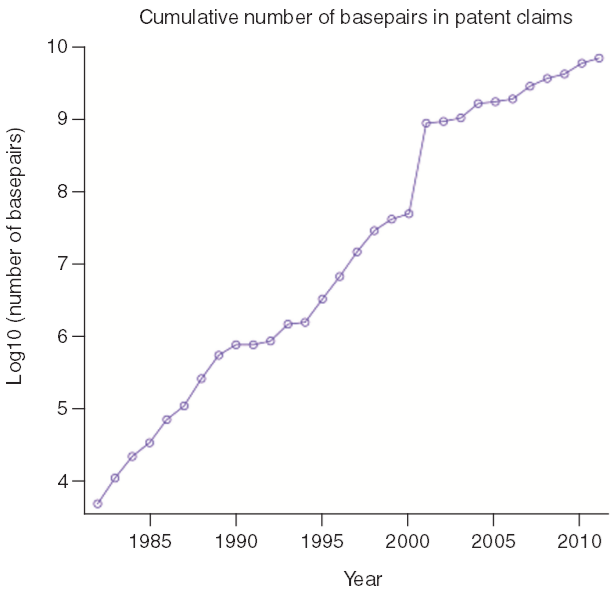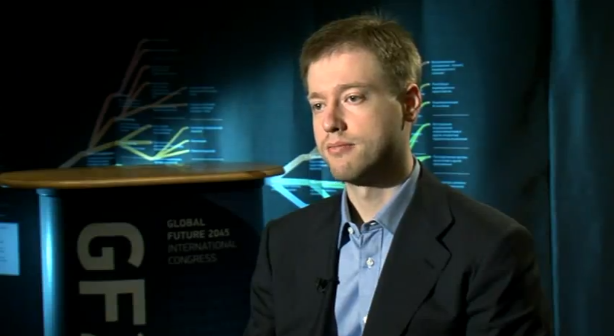Πανω απο 40.000 πατεντες πανω σε μορια DNA εχουν επιτρεψει σε εταιρειες στην ουσια να διεκδικουν δικαιωματα στο ανθρωπινο γονιδιωμα με σκοπο το κερδος, αναφερουν δυο ερευνητες.
Η μελετη τους δημοσιευτηκε στις 25 Μαρτιου στην εφημεριδα
Genome Medicine,προκαλωντας συναγερμο
για την απωλεια της προσωπικης "Γονιδιακης Ελευθεριας"
-Διαβαστε πιο αναλυτικα το πρωτοτυπο αρθρο με πηγη KURZWEIL- Genome Medicine
[+]
C
Court-proposed molecular points of distinction that allow claims on isolated DNA sequences. On the basis of two molecular changes (small circles) to a single phosphate and one hydroxyl group, the Federal Circuit suggested that a new DNA fragment is patentable subject matter. (Credit: Genome Medicine)
Humans no longer “own” their own genes.
The more than 40,000 patents on DNA molecules have allowed companies to essentially claim the entire human genome for profit,
report two researchers. Their study, published March 25 in the journal
Genome Medicine, raises an alarm about the loss of individual “genomic liberty.”
The research team examined two types of patented DNA sequences: long and short fragments. They discovered that 41 percent of the human genome is covered by longer DNA patents, which often cover whole genes. They also found that, because many genes share similar sequences within their genetic structure, if all of the “short sequence” patents were allowed in aggregate, they could account for 100 percent of the genome.
Furthermore, the study’s lead author, Dr. Christopher E. Mason of Weill Cornell Medical College, and the study’s co-author, Dr. Jeffrey Rosenfeld, an assistant professor of medicine at the University of Medicine & Dentistry of New Jersey and a member of the High Performance and Research Computing Group, found that short sequences from patents also cover virtually the entire genome — even outside of genes.
“If these patents are enforced, our genomic liberty is lost,” says Dr. Mason, an assistant professor of physiology and biophysics and computational genomics in computational biomedicine at the Institute for Computational Biomedicine at Weill Cornell. “Just as we enter the era of personalized medicine, we are ironically living in the most restrictive age of genomics. You have to ask, how is it possible that my doctor cannot look at my DNA without being concerned about patent infringement?”
[+]
Court-proposed molecular points of distinction that allow claims on isolated DNA sequences. On the basis of two molecular changes (small circles) to a single phosphate and one hydroxyl group, the Federal Circuit suggested that a new DNA fragment is patentable subject matter. (Credit: Genome Medicine)
The U.S. Supreme Court will review genomic patent rights in an upcoming hearing on April 15.
At issue is the right of a molecular diagnostic company to claim patents not only on two key breast and ovarian cancer genes — BRCA1 and BRCA2 — but also on any small sequence of code within BRCA1, including a striking patent for 15 nucleotides.
In its study, the research team matched small sequences within BRCA1 to other genes and found that just this one molecular diagnostic company’s patents also covered at least 689 other human genes — most of which have nothing to do with breast or ovarian cancer; rather, its patents cover 19 other cancers as well as genes involved in brain development and heart functioning.
“This means if the Supreme Court upholds the current scope of the patents, no physician or researcher can study the DNA of these genes from their patients, and no diagnostic test or drug can be developed based on any of these genes without infringing a patent,” says Dr. Mason.
Dr. Mason undertook the study because he realized that his research into brain and cancer disorders inevitably involved studying genes that were protected by patents.
Under U.S. patent law, genes can be patented by researchers, either at companies or institutions, who are first to find a gene that promises a useful application, such as for a diagnostic test. For example, the patents received by a company in the 1990s on BRCA1 and BRCA2 enables it to offer a diagnostic test to women who may have, or may be at risk for, breast or ovarian cancer due to mutations in one or both of these genes.
Women and their doctors have no choice but to use the services of the patents’ owner, which costs $3,000 per test, “whereas any of the hundreds of clinical laboratories around the country could perform such a test for possibly much less,” says Dr. Mason.
The impact on these patents is equally onerous on research, Dr. Mason adds.
“Almost every day, I come across a gene that is patented — a situation that is common for every geneticist in every lab,” says Dr. Mason.
Dr. Mason and his research partner sought to determine how many other genes may be impacted by gene patents, as well as the overall landscape of intellectual property on the human genome.
To conduct the study, Dr. Mason and Dr. Rosenfeld examined the structure of the human genome in the context of two types of patented sequences: short and long fragments of DNA. They used matches to known genes that were confirmed to be present in patent claims, ranging from as few as 15 nucleotides (the building blocks of DNA) to the full length of all patented DNA fragments.
Before examining the patented sequences, the researchers first calculated how many genes had common segments of 15 nucleotide (15mer), and found that every gene in the human genome matched at least one other gene in this respect, ranging from as few as five matches of 15mer to as many as 7,688 gene matches. They also discovered that 99.999 percent of 15mers in the human genome are repeated at least twice.
“This demonstrates that short patent sequences are extremely non-specific and that a 15mer claim from one gene will always cross-match and patent a portion of another gene as well,” says Dr. Mason. “This means it is actually impossible to have a 15mer patent for just one gene.”
Next, researchers examined the total sequence space in human genes covered by 15mers in current patent claims. They found 58 patents whose claims covered at least 10 percent of all bases of all human genes. The broadest patent claimed sequences that matched 91.5 percent of human genes. Then, when they took existing gene patents and matched patented 15mers to known genes, they discovered that 100 percent of known genes are patented.
“There is a real controversy regarding gene ownership due to the overlap of many competing patent claims. It is unclear who really owns the rights to any gene,” says Dr. Rosenfeld. “While the Supreme Court is hearing one case concerning just the BRCA1 patent, there are also many other patents whose claims would cover those same genes.
“Do we need to go through every gene to look at who made the first claim to that gene, even if only one small part? If we resort to this rule, then the first patents to be granted for any DNA will have a vast claim over portions of the human genome.”
A further issue of concern is that patents on DNA can readily cross species boundaries. A company can have a patent that they received for cow breeding and have that patent cover a large percentage of human genes. Indeed, the researchers found that one company owns the rights to 84 percent of all human genes for a patent they received for cow breeding. “It seems silly that a patent designed to study cow genetics also claims the majority of human genes,” says Dr. Rosenfeld.
Finally, they also examined the impact of longer claimed DNA sequences from existing gene patents, which ranged from a few dozen bases up to thousands of bases of DNA, and found that these long, claimed sequences matched 41 percent (9,361) of human genes. Their analysis concluded that almost all clinically relevant genes have already been patented, especially for short sequence patents, showing all human genes are patented many times over.
“This is, so to speak, patently ridiculous,” adds Dr. Mason. “If patent claims that use these small DNA sequences are upheld, it could potentially create a situation where a piece of every gene in the human genome is patented by a phalanx of competing patents.”
In their discussion, the researchers argue that the U.S. Supreme Court now has a chance to shape the balance between the medical good versus inventor protection, adding that, in their opinion, the court should limit the patenting of existing nucleotide sequences, due to their broad scope and non-specificity in the human genome.
“I am extremely pro-patent, but I simply believe that people should not be able to patent a product of nature,” Dr. Mason says. “Moreover, I believe that individuals have an innate right to their own genome, or to allow their doctor to look at that genome, just like the lungs or kidneys. Failure to resolve these ambiguities perpetuates a direct threat to genomic liberty, or the right to one’s own DNA.”





